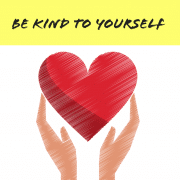Exercise, Nutrition & Sleep
 Hugh Van Cuylenburg from The Resilience Project talks about 3 daily research-backed activities that have been shown to help prevent mental health issues in children and adults, and improve symptoms where there are existing problems. These 3 activities are:
Hugh Van Cuylenburg from The Resilience Project talks about 3 daily research-backed activities that have been shown to help prevent mental health issues in children and adults, and improve symptoms where there are existing problems. These 3 activities are:
- Gratitude
- Mindfulness
- Empathy.
The research is showing if you practise these 3 things everyday for 21 days it will improve your happiness.
Sounds simple! Although these tools are the focus of his talks, he did say they will not work without exercise, good nutrition and sleep – so in this blog we’ll explore why that is.
Exercise
Moving your body a lot (whether it’s sport or walking the dog) will release feel-good chemicals (hormones) in your body called endorphins. You want endorphins because they make you feel happy and relaxed. Exercise also releases other chemicals important for mood and motivation, called serotonin and dopamine – and if that’s not enough, it releases growth factors which help your brain to grow and adapt (a process known as neuroplasticity). Conversely, sitting for hours on end, on computer games, or computer or watching TV makes most people feel tired and grumpy and is disruptive to our brain chemistry.
Nutrition
Having a few treats every now can make us feel happy, but when we have too many it can affect our mood. There is a connection between what you eat and how you feel. Research is showing that if you eat lots of fruit, vegetables and whole-grains it can boost your mood. Eating loads of sugar and processed food (ie ‘junk food’) may cause your mood to decline. Although it’s complex, this could be related to the link between our gut and the brain (called the gut-brain axis) – for example, over 90 percent of the mood enhancing neurotransmitter serotonin is produced in our gut and not our brain. If our gut isn’t happy, it sends messages up to the brain and in turn affects our mood.
Sleep
Sleep is as important as nutrition and exercise. Nothing good comes from not getting enough sleep. Sleep affects mood, learning and behaviour. It also helps us get better if we’re sick. When we’re sick, sleep produces infection-fighting proteins called cytokines, which also make us feel sleepy. That’s why when we’re not feeling well, we also feel tired. It’s our body telling us to rest. Sleep is also the time when our brains flush out toxins and repair and strengthen our brain cells. It’s like sleep is the time our brains take out the rubbish.

So, in summary – practising gratitude, mindfulness and empathy along with eating well, moving a lot and getting a good night’s sleep are the keys to a healthy, happy life.



 One of the
One of the 

 WHY DOES IT WORK?
WHY DOES IT WORK?








 There are fixed, heritable genes (such as skin and eye colour) and there are genes that can be influenced daily according to our lifestyle. These genes are continually directing the production of proteins that control how your body functions at every second of the day. Genes turn on or off (sometimes at a rapid rate) only in response to signals they receive from the surrounding environment – signals that you provide based on the food you eat, the exercise you do (or don’t do!), your quality of sleep, sun exposure and so on. Genes are like light switches that turn on and off and influence every element of body function. So, you are in the driver’s seat to take control of your genes expression. Here are some tips for you:
There are fixed, heritable genes (such as skin and eye colour) and there are genes that can be influenced daily according to our lifestyle. These genes are continually directing the production of proteins that control how your body functions at every second of the day. Genes turn on or off (sometimes at a rapid rate) only in response to signals they receive from the surrounding environment – signals that you provide based on the food you eat, the exercise you do (or don’t do!), your quality of sleep, sun exposure and so on. Genes are like light switches that turn on and off and influence every element of body function. So, you are in the driver’s seat to take control of your genes expression. Here are some tips for you:
 With a multi-million dollar weight loss and fitness industry, plus thousands of apps you’d think it’d be easy for us to stick with a diet and exercise program. It all starts with the best of intention, but then momentum starts slowing down and motivation dwindles until you’re left with another weight loss ‘’ notch on your belt.
With a multi-million dollar weight loss and fitness industry, plus thousands of apps you’d think it’d be easy for us to stick with a diet and exercise program. It all starts with the best of intention, but then momentum starts slowing down and motivation dwindles until you’re left with another weight loss ‘’ notch on your belt.